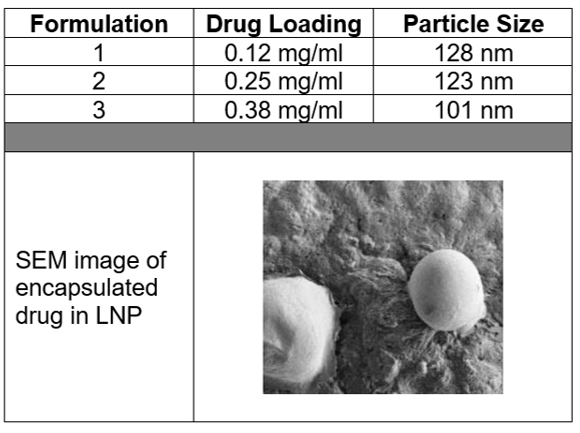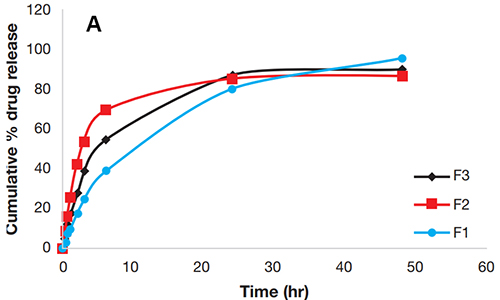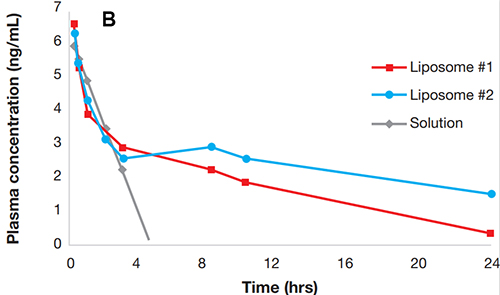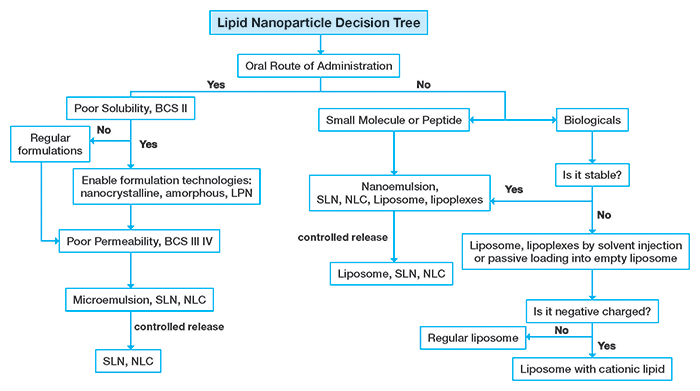Issue:November/December 2022
FORMULATION FORUM - Lipid Nanoparticles: Tackling Solubility Challenges With Lipid-Based Technologies for Oral & Injectable Formulations
INTRODUCTION
Throughout the years, tremendous progress has been made in drug formulations with the launch of new excipients and formulation technologies. Yet, with an increasing number of new chemical entities (NCEs), challenges remain at hand, and the drug manufacturers are open for adapting new technologies to expedite the clinical development and commercialization of these molecules.1 With increased regulatory compliances, drug manufactures are also taking innovative approaches in designing and developing formulations to reduce pill burden and improve safety and efficacy of drug molecules. It not only applies to drug manufacturers, but also to contract manufacturers, including Ascendia Pharma.2
More than 80% of NCEs are poorly soluble compounds, thus, solubilization remains one of the important topics in formulation and drug development. The factors responsible for poor solubility are activity coefficient and crystal terms. Activity coefficient is the amount of drug partitioned between organic and aqueous phase, Octanol/water; and crystal term defines the melting point of drug. In other words, both the higher melting point (MP) and higher partitioning of an API in organic phase (or logP), will dictate the solubility of compound, which is simplified by Equation 1.3
Equation 1
Where, Kow, the partitioned coefficient between organic (octanol) and aqueous phases; higher Kow (log P) means drug prefers to partition more in organic phase compared to aqueous phase; whereas, MP represents the melting point of drug, meaning the higher the melting point, the lower the solubility, and hence, poor absorption and bioavailability. The melting points and logP truly represent the physical characteristics of an API upon which many of the enabling solubilization technologies are based on. For instance, depending on lower or higher melting or logP, preferably one over the other technology can be amenable.4
FORMULATION TECHNOLOGIES
Conventional technologies, such as micronization/micromilling, pH modifications/salt formation, and complexation with cyclodextrins, have been used successfully for many commercial drugs in oral tablets, oral liquids, and parenteral formulations. However, the challenges stem from the lack of inherent compatibility with excipients and processing conditions used in manufacturing. As more hydrophobic or brick dust and/or lipophilic or waxy molecules come out of the discovery, the situation is more dire. In those cases, given the limited choices, the widely used innovative technologies are amorphous solid dispersions (ASDs) and lipid based self-emulsifying microemulsions, nanoemulsions, liposomes, and nanoparticles for oral and injectable formulations, (Figure 1).

Figure 1. Options for formulating poorly soluble NCEs with different technologies. (Click image to enlarge)
ADVANCEMENT IN FORMULATION TECHNOLOGIES
Polymers have been used in development of several drug products through ASDs prepared by hot melt extrusion, spray drying, and co-precipitation among others.6 There are some advantages of selecting the polymers for such enabling technologies due to their stability and solubilization capabilities, ease of handling, and long-term stability. This article will not cover the ASD technologies but instead will focus on innovative lipid-based enabling formulation technologies for oral and injectable formulations of poorly soluble compounds.
In the recent past, lipids have gained importance due to better suitability and more efficient delivery of drugs by overcoming challenges often associated with stability and food effects. In fact, recently, Crew showed that lipid-based formulations are growing two-fold faster than ASDs, due to lesser complexity, biocompatibility, easier formulation, and scale up than polymeric ASD technologies.6 For example, lipids used as proliposomes in dry, free-flowing powder, following re-constitution in buffer, formed multilamellar vesicles (MLVs) with higher drug loading, improved efficacy in oral formulation.7 Katare et al. have also demonstrated that indomethacin in pro-liposomes improve efficacy when administered orally.8 Likewise, the lipid based SEDDS/SMEDDS also have gained importance for improving the efficacy of many marketed drugs.9 The following will describe lipid nanoparticles, the next generation of liposomes, and their relevance in delivery of drugs (oral and injectable routes of administration) for immediate- and controlled-release applications.
LIPID NANOPARTICLES – AN IMPACT ON ENHANCING SOLUBILITY & BIOAVAILABILITY OF NCEs
Before defining the LNP, it is relevant to understand the nanosizing of APIs. It is equally important because the size reduction could lead to higher surface area, faster absorption, and greater bioavailability. Nanosizing or nanonization by microfluidics, for example, can create higher energy fine particles in liquid suspension. For instance, danazol nanosuspension with a particle size of 169 nm increased solubility and enhanced 15-fold bioavailability compared to regular liquid suspensions (82.3% ± 10% vs. 5.1% ± 1.9%).10 Atovaquone resulting from nanosizing with 100-300 nm in particle size, enhanced the bioavailability by 2.5-fold compared to the marketed drug (Wellvone®). Evidently, nanosizing increases the surface area and in vivo exposure, which results in enhancing the bioavailability of APIs. These are all equally important as many NCEs possess poor solubility, and developing them in medium to high dosages could lead to undesired toxicity and side effects, which may lead to long-term health risks. Therefore, finding the appropriate formulation technologies and strategies to help prevent unwanted side effects in clinical studies and in post launch marketed drugs are highly warranted for immediate release, controlled release, and lifecycle management, in general. In such cases, lipid particulates could play an important role in increasing the bioavailability of drugs via lymphatic absorptions and thereby avoiding the first-pass metabolism.11
Lipid and surfactant-based particulates have been identified as alternative delivery systems other than polymeric excipients. We often find in literature interchangeable terminologies of these aggregates; namely, nano-emulsions versus microemulsions; microemulsions versus macoremulsions, macroemulsions versus emulsions, and nanoparticles versus nanocarriers among others. Figure 2 clarifies some of the misconceptions and sheds light on the evolution of these assemblies and their relevance in drug delivery throughout the years.

Figure 2. Progression of colloidal drug delivery systems over 5 decades. Reference 12. (Click image to enlarge)
Some classic differences obviously exist between all these assemblies. For instance, microemulsions versus nanoemulsions may sound very similar but are different in particle sizes, method for preparations, and/or stability; whereas, macro versus micro emulsion may differ in particle size and stability (thermodynamically vs kinetically) and encapsulation efficiency. Likewise, polymeric nanoparticles are stable but different than lipid aggregates though preparations for polymers, and lipid/surfactant-based particulates may require the same, low or higher shear energy mixing. Larger lipid droplets, such as emulsions and/or macroemulsions (> 1 microns), could lead to Oswald ripening, yielding much larger droplets, which could squeeze out encapsulated drugs from the interior core, leading to precipitate at the outer particulate surface. Therefore, the smaller particle droplets are preferred in drug delivery, which are critical for stability, higher drug loading, and faster dispersibility and absorption in the GI tract and/or longer systemic circulation.
SURFACTANT & LIPID-BASED FORMULATIONS FOR POORLY SOLUBLE APIs
A number of drugs have been developed and marketed in surfactant/lipid suspensions and nanoparticles with the aim at enhancing solubility and bioavailability, stability, and/or minimizing the food effects.13 For example, aprepitant, marketed as Emend®, was developed in nanoparticles/nanosuspension at 80-mg and 125-mg doses to overcome food effects. Abraxen, formulated in albumin, for example, with a particle size of 130 nm, is better tolerated than paclitaxel formulated in polyoxyl 35 castor oil and ethanol.14 Cyclosporine A, for instance, formulated as Sandimmune® versus Neoral® (particle size <200 nm) showed different bioavailability due to differences in lipid types and compositions used, and most interestingly, with faster emulsifying nanoparticle capabilities that led to rapid absorption, minimizing food effects compared to Sandimmune® with larger particles.15
SOLID LIPID NANOPARTICLES (SLNs) & NANOSTRUCTURED LIPID CARRIERS (NLCs)
Lipid nanoparticulates are widely applied in drug delivery compared to self- emulsifying microemulsions, nanoemulsions, and/or liposomes due to their inherent greater stability and higher encapsulation efficiency. LNPs in the recent years have emerged as promising delivery vehicles for a variety of therapeutics, including playing an important role in Covid-19 vaccines by protecting, carrying mRNA and delivering to target cells.16 Figure 3 illustrates the similarities/dissimilarities of these lipid assemblies in terms of drug encapsulation capabilities.

Figure 3. SLNs (left) and NLCs (right)
Lipid nanoparticles (LNPs) – SLNs and NLCs, because of their higher drug encapsulation efficiency, stability, ease of preparation, biocompatibility, non-immunogenicity, and most importantly, controlled release, tissue targeting, and maximum drug entrapment efficiency are highly preferred. SLNs primarily created by 0.5%-5% surfactants as emulsifying agents, with solid low melting lipids, are spherical in diameter (>50 nm) in which the inner core is saturated fatty acid (solid) embedded with API, and the outer surface is surrounded by emulsifying agents, surfactants, or PEGylated lipids. These SLNs are prepared by cold or hot homogenization and solvent injection processes.17 In the cold homogenization process, drug dissolved in lipid melt is quenched rapidly in liquid nitrogen or dry ice, causing it to solidify, which is then milled to 50-100 nm in size and dispersed with surfactant solution to pre-suspension. Following high pressure homogenization at cold temperature, it yields SLNs.18 In the hot homogenization process, the melt lipid with API is dispersed in hot aqueous surfactant solution by ultrasonication or high shear mixing to pre-emulsions, leading to SLNs. There are other methods to produce SLNs and NLCs including ultrasonication or high-speed homogenization, supercritical fluid extraction of emulsions, and by spray drying.
NLCs are next-generation modified SLNs and have been used widely in oral, pulmonary, gene, injectable, and topical applications. Structurally, NLCs are composed of both solid (fat) and liquid (oil) lipids at ambient temperature that help improve drug loading and stability by accommodating APIs in the interior core better than hydrophobic SLNs’ interior core.19,20
CASE STUDIES
Carvedilol, marketed as Coreg®, is a poorly soluble, weakly alkaline molecule. Ascendia developed this drug using its proprietary solubilization technology as sustained release, stabilized injectable lipid nanoparticle formulations with three different drug loading and particle sizes as shown in Table 1.

Table 1. LNP formulations containing carvedilol and SEM images of particulates.
Dissolution profile (Figure 4A) shows an extended release over 24 hours for all three formulations. The in vivo PK data from two formulations show these lipid nanoparticles when administered IV in two groups of rats delivered drug over an extended period (>24 hours) compared to drug in solution (Figure 4B). Taken collectively, these data further suggest the lipid compositions play an important role in controlling the release of drugs over extended periods.21


Figures 4A & 4B. Dissolution (A) and PK profile in rat (B) of carvedilol in liposomal preparations composed of phospholipids.
SUMMARY
The decision for selecting the right and most suited technology for formulating a complex molecule could be challenging as it depends on the physico-chemical properties of an API. In instances where the API is thermally labile and poorly soluble, the choices are limited for ASDs like hot melt extrusion (HME), Kinetisol®, or even spray drying (SD) unless carried out under controlled temperature. In such cases, the lipid-based technologies might be more relevant, wherein, the decisions can be made swiftly and tailored to meet the specific formulation needs with regard to excipients’ suitability and compatibility with the API. Long-term stability and minimizing API degradation and impurities could be of relevance when selecting SLN vs NLC formulations for oral and injectable formulations. To expedite further, computer-based simulation models are used to predict stability and degradation of APIs and help select the appropriate excipients to design better and smarter formulations to select and streamline the process and expedite the development. Lipid-based excipients for parenteral formulations, requiring phospholipids and long-circulating phospholipids and sterols for liposome stability, further help in creating the most stable API environment within encapsulated lipid nanoparticles from the formulation toolkit of the decision tree as shown in Figure 5. Thus, an understanding of an API’s characteristics will shorten timelines (to help advance in the clinic phases and commercialization) of drug candidates using the appropriate solubilization technologies.

Figure 5. Decision tree for selecting the lipid nanoparticles.
REFERENCES
- P. Elder, Effective formulation development strategies for poorly soluble active pharmaceutical ingredients (APIs), Am. Pharm. Rev., 2010 (October).
- Ascendia Pharma – Solubilization platform technologies (https://ascendiapharma.com/services/special-development-programs/nano-formulations/) and https://ascendiapharma.com/2022/07/28/liposome-vs-lipid-nanoparticle/.
- H. Yalkowsky, Solubility and Solubilization in Aqueous Media, Published by American Chemical Society, 1999; ISBN 10: 0841235767 / ISBN 13: 9780841235762.
- Kalepu and V. Nekkanti, Insoluble drug delivery strategies: review of recent advances and business prospects, Acta Pharmaceutica Sinica B, 2015, 5, 442-453.
- V. Bhujbal, B. Mitra, U. Jain, Y. Gong, A. Agrawal, S. Karki, L. S. Taylor, S. Kumar and Q. Zhou, Pharmaceutical amorphous solid dispersions: A review of manufacturing strategies, Acta Pharmaceutica Sinica B, 2021, 11, 2505-2536.
- Crew, Bioavailability Enhancement – Analysis of the historical use of solubilization technologies. Drug Development & Delivery. 2014, 14, 22-25.
- Nekkani, N. Venkatesan, and G. V. Betageri, Proliposomes for oral delivery: progress and challenges, Curr. Pharm. Biotech., 2015, 16-1-10.
- P. Katare, S. P. Vyas, and V. K. Dixit, Proliposomes of indomethacin for oral administration, J. Microencapsul., 1991, 8, 1-7.
- Wu, Y. Qiao, L. Wang, J. Guo, G. Wang, W. He, L. Yin and J. Zhao, A self emulsifying drug delivery system(SMEDDS) for novel medicative compounds against depression: a preparation and bioavailability study in rats, AAPS PharmSciTech, 2015, 16, 1051-1058.
- L. Roger, K. P. Johnson, and R. O. Williams, Solution based particle formation of pharmaceutical powders by supercritical or compressed fluid CO2 and cryogenic spry freezing technologies, Drug Dev. Ind. Pharm., 2001, 27, 1003-1015.
- A. Khan, J. Mudassir, N. Mohtar, and Y. Darwis, Advanced drug delivery to the lymphatic system: lipid-based nanoformulations, Int. J. Nanomedicine, 2013:8 2733–2744.
- Wen, B. Liu, Z. Zheng, X. You, Y. Pu, and Q. Li, Preparation of liposomes entrapment essential oil from Atractylodes macrocephala Koidz by modified RESS technique, Chem. Eng. Res. Des., 2010, 88, 1102-1107.
- Mullertz, A. Ogbonna, S. Ren, and T. Rades, New perspectives on lipid and surfactants-based delivery systems for poorly soluble drugs, J. Pharm. Pharmacol., 2010, 62, 1622-1633.
- Wong, A Brugger, A. Khare, and M. Chaubal, P. Papadopoulos, B. Rabinow et al., Suspensions for intravenous (IV) injection: a review of development, preclinical and clinical aspects, Ad. Drug Deliv. Rev., 2008, 60, 939-954.
- Vonderscher and A. Meinzer, Rationale for the development of Sandimmune Neoral, Transplant Proc., 1994, 26, 2925-2927.
- Tenchov, R. Bird, A. E. Curtze, and Q. Zhou, Lipid nanoparticles – from liposomes to mRNA vaccine delivery, a landscape of research diversity and advancement, ACS Nano, 2021, 15, 16982−17015.
- Duan, A. Dhar, C. Patel, Mehul Khimani, S. Neogi, P. Sharma, N. S. Kumar, and R. Vekariya, S brief review on solid lipid nanoparticles: part and parcels of complementary drug delivery systems, RSC Adv. 2020, 10, 26777-26791.
- Selvamuthukumar and R. Velmurugan, Nanostructured lipid carriers: A potential drug carrier for cancer chemotherapy, Lipids Health Dis. 2012, 11:159, doi:10.1186/1476-511X-11-159.
- Nasei, H. Valizadeh, and P. Zakeri-Milani, Solid lipid nanoparticles and nanostructured lipid carriers: structure, preparation and application, Adv. Pharm. Bull., 2015, 5, 305-313.
- Mehnert and K. Mader, Solid lipid nanoparticles: production, characterization, and applications, Adv. Drug Deliv. Rev., 2001, 47, 165-186.
- Ivanova K. Maeda, W. Wang, D. Guo and J. Huang, Parenteral sustained release delivery of carvedilol dispersed systems, US Patent 10,792,244 (October 6, 2020).

Jim Huang, PhD
Founder & CEO
Ascendia Pharmaceuticals
j.huang@ascendiapharma.com
www.ascendiapharma.com
Dr. Jim Huang is the Founder and CEO of Ascendia Pharmaceuticals, Inc. he earned his PhD in Pharmaceutics from the University of the Sciences in Philadelphia (formerly Philadelphia College of Pharmacy and Sciences) under Joseph B. Schwartz. He has more than 20 years of pharmaceutical experience in preclinical and clinical formulation development, manufacturing, and commercialization of oral and parenteral dosage forms. His research interests are centered on solubility/bioavailability improvement and controlled delivery of poorly water-soluble drugs through nano-based technologies.

Shauket Ali, PhD
Sr. Director, Scientific Affairs & Technical Marketing
Ascendia Pharmaceuticals
shaukat.ali@ascendiapharma.com
www.ascendiapharma.com
Dr. Shaukat Ali joins Ascendia Pharmaceuticals Inc. as Senior Director of Scientific Affairs and Technical Marketing after having worked in the pharma industry for many years. His areas of expertise include lipid chemistry, liposomes, lipid nanoparticles, surfactant-based drug delivery systems, SEDDS/SMEDDS, oral and parenteral, topical and transdermal drug delivery, immediate- and controlled-release formulations. He earned his PhD in Organic Chemistry from the City University of New York and carried out his post-doctoral research in Physical Biochemistry at the University of Minnesota and Cornell University. He has published extensively in scientific journals and is inventor/co-inventor of several US and European patents.
Total Page Views: 7460









